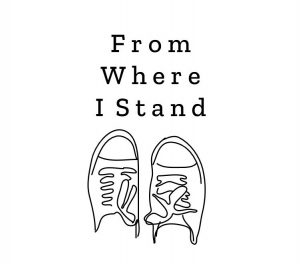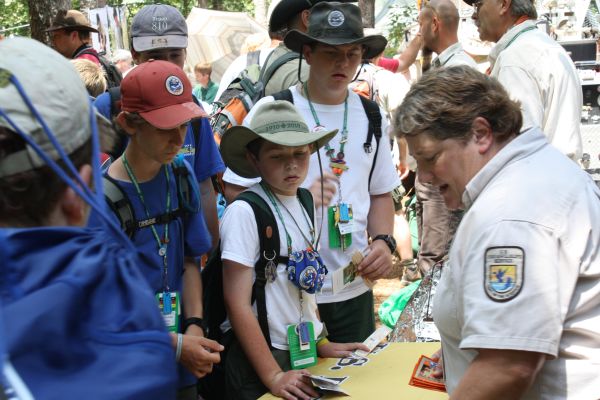One Scout, Two Scout, Boy Scouts, New Scouts?
June 28, 2018
“No youth may be denied membership in the Boy Scouts of America on the basis of sexual orientation or preference alone.”
On May 23, 2013, the Boy Scouts of America (BSA) reversed a century-old policy prohibiting homosexual members on the basis that they did not “possess the moral…and emotional qualities deemed necessary” to be a role model to the youth of America and could not fulfill the last tenet of the Scout Oath, to be “morally straight.”
 A 2016 Pew Research Center poll revealed 55 percent of Americans reported their support of same-sex marriage, compared with 37 percent who did not. In contrast, a similar Pew poll in 2001 yielded 57 percent opposing same-sex marriage and 35 percent in support. With an increasingly progressive American mindset in areas like same-sex marriage and gay rights, more parents have pulled their kids from Boy Scouts or simply not signed them up, resulting in a decrease in membership from 6.5 million Boy Scouts in 1972 to 2.3 million today—and an 11 percent drop in the past decade alone.This monumental shift in BSA policy was in response to significant pressure from liberal groups in support of membership for LGBTQ+ boys, including legal challenges such as Dale vs. Boy Scouts of America in 2000.
A 2016 Pew Research Center poll revealed 55 percent of Americans reported their support of same-sex marriage, compared with 37 percent who did not. In contrast, a similar Pew poll in 2001 yielded 57 percent opposing same-sex marriage and 35 percent in support. With an increasingly progressive American mindset in areas like same-sex marriage and gay rights, more parents have pulled their kids from Boy Scouts or simply not signed them up, resulting in a decrease in membership from 6.5 million Boy Scouts in 1972 to 2.3 million today—and an 11 percent drop in the past decade alone.This monumental shift in BSA policy was in response to significant pressure from liberal groups in support of membership for LGBTQ+ boys, including legal challenges such as Dale vs. Boy Scouts of America in 2000.
By opening Boy Scouts to all sexualities and, as of January 2017, transgender boys, BSA hoped to stem the decline of membership and improve its societal image; however, the action only cost them more.
The original BSA policy on homosexuals was the result of religious ties, as the organization is founded largely on Christian ideals and cooperation with community churches. The largest participant in Boy Scouts since 1913 has been the Church of Jesus Christ of the Latter-Day Saints, with the church automatically enrolling every boy who attended a Mormon congregation.
However, as is the case with other conservative religions, the Mormon Church teaches that homosexuality is a sin. The church severed its ties with BSA after the statement on transgender members was released, pulling the majority of their members and funding.
With Mormons accounting for 18.5 percent of Boy Scouts, BSA once again was in a position of plunging membership. Thus, in an effort to expand its numbers and increase funding, Boy Scouts announced in October 2017 it would admit girls into the Cub Scouts program and, by 2019, create a Scouting program allowing girls to advance to the rank of Eagle Scout.
“The values of Scouting – trustworthy, loyal, helpful, kind, brave and reverent, for example – are important for both young men and women,” said Michael Surbaugh, BSA’s chief Scout executive, in a statement.
The decision has posed two major questions – how will it impact the Girl Scouts, and what will a co-ed BSA look like?
When comparing the teachings in the oaths and laws of both organizations, the ideals of courtesy, resourcefulness, leadership, service, resilience, integrity and duty to one’s God and country are clearly stated. Yet the groups have developed quite differently overtime.
The Boy Scouts of America formed in 1910 in the manner of the British Boy Scouts Association’s founding a couple years before, with Girl Scouts following suit in 1912. There was a brief push toward making Scouting co-ed that was quickly shut down, thanks to fears that a youth group which included girls would not be seen as sufficiently “manly” by boys. Boy Scouts was quickly defined by the image of the frontiersman connected to the national narrative of surviving in the westward migration. In contrast, Girl Scouts formed as an urban movement, focusing more on teaching more domestic, social skills than outdoor adventure. To this day, the Girl Scout headquarters is in New York City while BSA is based in Texas.
These differences between the more modern, community-oriented Girl Scouts and the traditional, wilderness-oriented Boy Scouts have permeated nearly every aspect of the two organizations, and with that, imbalances have developed.
Starting with the basic topic of merit badges, Girl Scouts earn most of their badges from STEM and entrepreneurial activities compared to Boy Scouts focusing on athletics and survival skills. Although camps that include outdoor activities like camping, hiking and whitewater rafting exist for both organizations, only BSA hosts hundreds of trips for troops at high adventure bases such as Philmont Scout Ranch in the Rocky Mountains of New Mexico and the Sea Base located in the Florida Keys. This difference in what activities and skills are most valued is evident even in the culminating ranks of a Girl Scout and Boy Scout’s career, the Gold Award and Eagle Scout respectively. Each requires a major project requiring dozens of hours of community service and substantial experience in one’s troop. However, Gold Award projects tend to lean towards social issues such as ocean conservation or educational initiatives compared to Eagle Scout projects, which consist largely of park and recreational improvements or trail building.
“It is well known that Boy Scouts tend to center most of their badges and events around survival and camping, whereas Girl Scouts focus more on community and leadership skills,” said rising PMHS sophomore Sophia Leung, and a Girl Scout since first grade in troop 1664. “My friends and I have been envious for many years about the amount of respect that Boy Scouts receive in comparison to Girl Scouts, and we’ve admired their camping trips and outdoor adventures.”
Although under the shadow of the better funded, more celebrated and larger BSA organization—and in the case of Pelham, the large and popular Troop 1—the Girl Scouts organization has taken great strides to empower its girls. One of its core principles is that the best environment in which to inspire girls to take charge as leaders and risk-takers is a girl-led, all-girl group. In a popular article on the Girl Scouts website titled, “It’s time to stop calling girls tomboys,” the organization argues that labeling ambitious, adventurous girls as “tomboys” discourages them from stereotypically male activities. And the annual cookie sales, for which Girl Scouts is best known, teach girls business management skills that no program in the BSA matches.
For these and other reasons, many Girl Scouts are likely to remain loyal to their troops and refrain from joining Boy Scouts.
“Most girls in Girl Scouts will stay in their (troops) because they have already committed to them,” said a Boy Scout who wished to remain anonymous. “You don’t change horses mid race. There needs to be lines between girls and boys. Girls need to do things with other girls and boys need to do things with other boys.”
“Boy Scouts and Girl Scouts were initially founded as groups that were meant to be exclusive to each gender to create supportive communities,” said Leung.
With many members wishing to remain in their respective organizations, a co-ed BSA is not the best way to evolve either. Instead, both organizations should improve and expand their visions. Girl Scouts have been taught to change the world while Boy Scouts have been taught to explore it, but both ideals are necessary and shouldn’t be gendered.
But now with the reality of a co-ed BSA, how will the future of scouting in America be impacted?
One of BSA’s lesser known programs, Venturing, has been co-ed since the 1970s for ages 14 to 20 and members participate in many of the same activities as Boy Scouts. However, I think a co-ed BSA will look more like the Scouts in the United Kingdom. As the founding organization of the global Scouting movement, the Boy Scouts Association opened membership to girls in 1976 and in 2005 made co-education compulsory for all scouting groups in Britain. Today, the Scout Association has become more popular for girls than boys, with 4,330 girls joining last year compared to 3,796 boys.
My experience of Cubs and later Scouts in Britain was similar to both Scouting organizations in the U.S. We held weekly meetings in uniform where we would make Christmas crackers (a tube decorated with colored paper with a prize inside popped open at Christmas dinner). These would be passed out around the holidays in front of the local church. I learned to tie a multitude of different knots. We had camping trips with segregated tents, but with fully co-ed, classic scouting experiences of eating beans over a bonfire, slicing open fingers while whittling and singing along to pop songs on hikes. I was promoted from ‘Scub’ (half Cub, half Scout) right alongside a boy who had a birthday a week before mine. There was even a 10-day hiking trip in the Alps for older Scouts, similar to the activities that happen at the BSA’s Philmont Scout Ranch.
I’ll always remember what one of our Scoutmasters, Chill, would tell us about being a girl in Scouts: That she could climb trees and tie knots and skin a rabbit as well as any guy, and she could keep her platinum blonde hair immaculate and long, pink nails in perfect condition at the same time.
The single-sex scouting organizations have value, but both the Girl Scouts and Boy Scouts could benefit from incorporating each other’s fundamental visions. Co-ed scouting has something unique to offer. Sure, girls can be taught how to take down trees with other girls and boys can learn to manage sales with other boys. But a young boy’s perspective on women could change drastically simply by learning to rock climb next to a girl, as a fellow Scout. The same would be true for a girl working alongside boys in her troop to build a house. And will the concept of girl power or the camaraderie of a brotherhood remain intact when on a co-ed camping trip? Will a mutual respect develop? Co-ed scouting offers a way for boys and girls to work together as equal partners.
Violet Massie-Vereker writes the regular From Where I Stand column and is Opinions & Ideas Editor for the Pelham Examiner.

DCS • Jun 29, 2018 at 2:20 pm
Very well articulated and thoughtful article. Thanks for expressing these ideas so clearly.